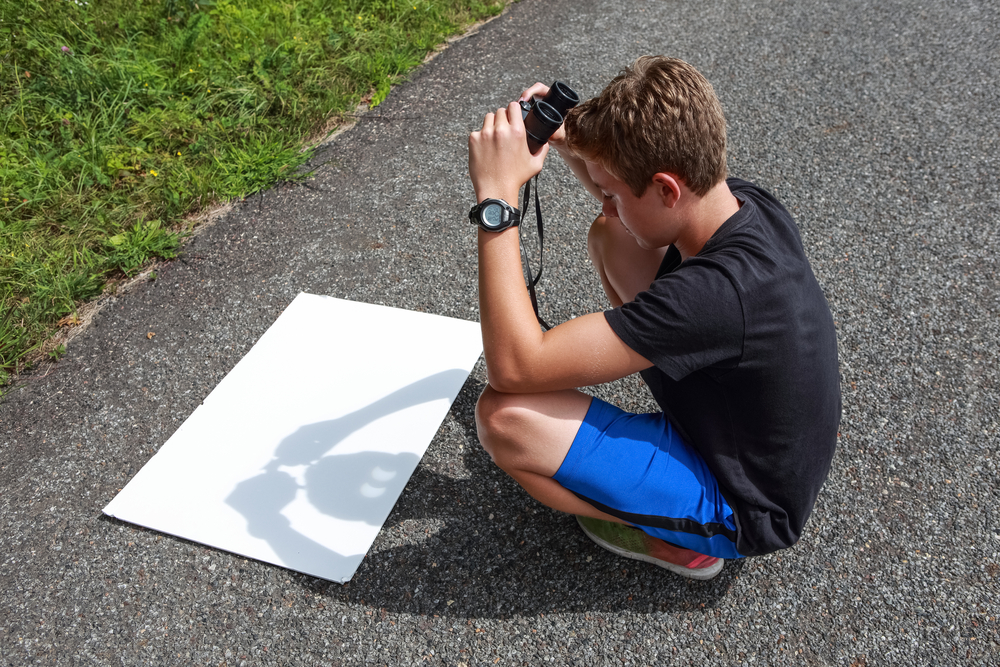On October 14, there will be an annular solar eclipse seen widely across the Americas. The Moon is near its apogee, the most distant point in its orbit; as it moves between the Earth and the Sun it will not cover our star completely, and the so-called “ring of fire” will remain visible. However, it’s dangerous to look at the Sun directly, so here’s how you can view it safely.
You shouldn’t try and look at the eclipse during totality (well, annularity), but it’s also important that people in regions where there is only a partial solar eclipse don’t look at it directly either. Even when the Sun is covered at 99 percent, the brightness of the surface remains the same and it will hurt your retina.
The ring of fire eclipse will be visible in a narrow path that goes from Oregon to Texas, crossing Yucatán, the southern portion of Central America, and then extending south to Brazil. It will be spectacular but not worth damaging your eyesight over. Below are ways to watch it safely.
Proper solar glasses and filters
The best option to see the eclipse is to have solar glasses. You can buy simple or fancy ones online, and you can even get them for free from local libraries, but make sure they have the ISO 12312-2 stamp, the lenses are not scratched, and they have the contact details of the manufacturer on them.
Do not use dark sunglasses, even if they are really dark. They are simply not good enough to protect your eyes. The same advice goes for cameras, binoculars, and telescopes – do not use them without filters.
Do not try to make “solar filters” at home; they do not work as well as you might think.
Pinhole camera and projector
You have left it to the last minute and you need to see the eclipse with only stuff you find in the house? Do not worry! There is a solution – you can make a pinhole camera or projector. The idea is to make sunlight pass through a small hole and you can get quite complicated with these, using cardboard boxes and projection screens, but the easiest way is much simpler.
Find some white paper, card, or cardboard. Cut a hole in the middle and stick some foil over the hole. Then use a needle to pierce the center of the foil and make a small hole. Use another piece of paper (or whatever surface is smooth and white-ish) and put it on the ground to act as a “screen”.
Put your back to the Sun and hold your pinhole projector against the Sun. An image of our star will appear on the ground. The further you hold your camera the bigger the image. You can even use binoculars to get an even better image of the Sun (don’t look through them) and aim the eyepiece at the white card on the ground.
NASA’s Jet Propulsion Laboratory also has a helpful guide to making a pinhole camera.

This is a way to see the eclipse in safety.
Image Credit: Suzanne Tucker/Shutterstock.com
The colander and the funnel methods
If you don’t have foil or card or needles, maybe you have a colander. Well, you can use the colander in the same way as a pinhole projector. It has holes in it, so by looking at the shadow it casts you should be able to see multiple images of the Sun.
An alternative approach (and a more complex one) is to use a funnel to create a projection screen for a telescope. The concept is to just direct the telescope image to a suitable piece of cloth which will allow people to see the eclipse happening without any risk to their eyes. Here is a handy guide.
Disco ball
A new method, which is definitely groovy, is to use a disco ball. The light of the eclipsing Sun will reflect on the small mirrors of the ball and then it will be projected on walls or surfaces where people can admire it.
This approach can work within just 2 meters (7 feet) from the disco ball, but it works best in large spaces where the projection wall is 15-91 meters (50-300 feet) away.
“Unlike commonly used tools for projecting eclipses, such as pinhole projectors, colanders, or tree canopies, a disco ball is able to function for large crowds because it does not merely work on the area where it casts its shadow, but across the entire illuminated hemisphere, which can project solar images across an entire room or courtyard,” the authors wrote in a recent paper.
You now have your options to watch the eclipse safely. And if you are not in the right place or not with the right weather, you can watch it online on NASA TV and the agency’s website and social media from 11:30 am to 1:15 pm EDT.
All “explainer” articles are confirmed by fact checkers to be correct at time of publishing. Text, images, and links may be edited, removed, or added to at a later date to keep information current.
Source Link: How To Safely Watch Next Week's "Ring Of Fire" Eclipse Across The US